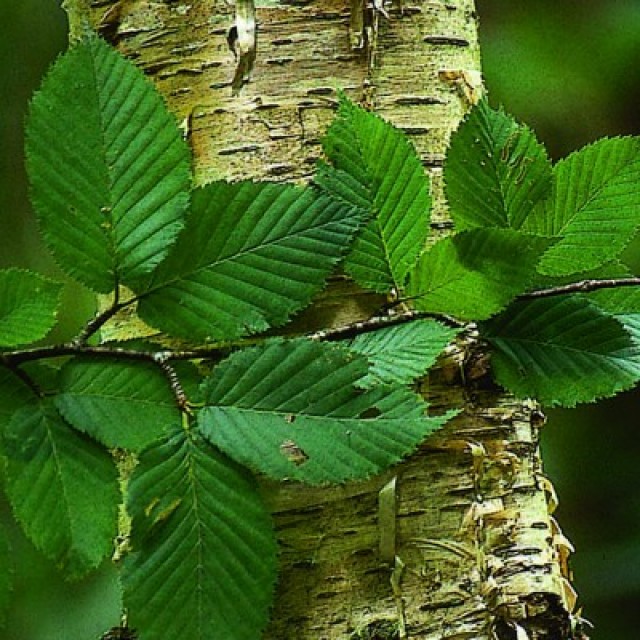COMMON NAME
Yellow birch
SCIENTIFIC NAME
Betula alleghaniensis
Plant family
Birch (Betulaceae)
Plant group
Deciduous Trees and Shrubs
A tree up to 20 m tall with yellow to bronze, peeling bark. Leaves are elliptical, pointed, with parallel veins and toothed edges. Smells of wintergreen if scratched.
109 reports
44+
OBSERVERS
109+
OBSERVATIONS
Identification hints
Yellow birch is most easily recognized by its bark which is shiny, yellow or silvery in color and peels off in shaggy, papery , horizontal curls (unless the tree is greater than 2 feet in circumference). Yellow birch leaves, like black birch, have a wintergreen odor when crushed but these leaves have side veins that are often branched, unlike black birch. Male and female flowers are borne separately in catkins. The male catkins are long and dangling. The female catkins are more compact. In the Fall, the leaves turn yellow.
Did you know?
Mountain folk like to use Yellow birch wood for baking since it is slow burning and gives off lots of heat. The papery bark is often used as a fire starter in wet weather. Yellow birch is also a popular wood for flooring and making toothpicks. This tree is one of the most common trees in Great Smoky Mountains National Park between 3,500 - 5,000 feet in elevation.
DISTRIBUTION IN TH U.S.
There is no information available about this species.
HABITAT
There is no information available about this species.
See Menu
- 2021 Chicago Botanic Garden. All Rights Reserved.
-
Creative Commons
BY-NC-SA 4.0 - Terms of Use
- Privacy Policy
- Data Sharing and Citation Policies
- 2021 Chicago Botanic Garden. All Rights Reserved.



